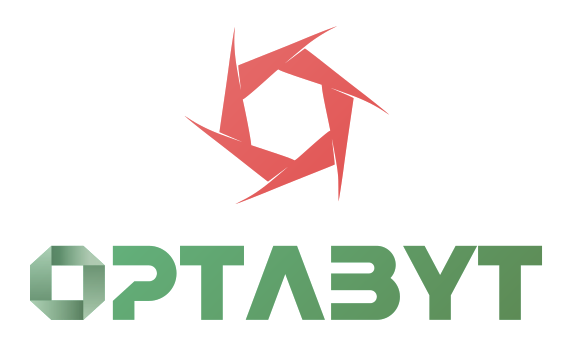
Table of Contents
ToggleMarket Segmentation – The Key to Smarter Marketing and Stronger Results
Table of Contents
Market Segmentation – The Key to Smarter Marketing and Stronger Results
What Is Market Segmentation?
Market segmentation, or markedssegmentering in Norwegian, is the process of dividing a broad market into smaller, more specific groups of consumers with similar needs, preferences, and behaviors. Instead of promoting one message to everyone, segmentation allows businesses to focus their marketing efforts on the audiences most likely to buy their products or services.
In simple terms, market segmentation helps businesses understand who their customers are, what they want, and how they make purchasing decisions. This knowledge allows for more personalized marketing campaigns, better product positioning, and improved return on investment (ROI).
For example, a company that sells sports shoes might create separate marketing strategies for runners, gym-goers, and casual wearers. Each group values different features — such as performance, comfort, or style — so personalized communication drives stronger engagement and sales.
Why Market Segmentation Matters in Today’s Business World
Modern consumers expect personalization. Generic advertising no longer works because customers want to feel understood and valued. That’s where market segmentation becomes essential.
Businesses that use segmentation effectively can:
Identify the most profitable customer groups
Focus marketing budgets efficiently
Improve customer loyalty through relevant messaging
Create products that meet actual customer needs
According to marketing research, personalized campaigns based on segmentation can increase conversion rates by up to 60% and boost customer retention significantly.
In other words, segmentation doesn’t just make marketing smarter — it makes it more human.
The Four Main Types of Market Segmentation
There are four core types of market segmentation that most businesses use. Each provides unique insights into customer behavior and decision-making.
1. Demographic Segmentation
Demographic segmentation divides consumers based on measurable characteristics such as:
Age
Gender
Occupation
Education level
Income
Marital status
Example: A skincare company may target anti-aging products to women over 40 while promoting acne solutions to younger audiences.
This approach helps marketers align their products with the right demographic profile and craft messages that resonate.
2. Geographic Segmentation
Geographic segmentation categorizes consumers based on their physical location — country, city, region, or climate.
Example: A clothing retailer might promote winter jackets in Norway and lightweight clothing in southern Europe.
This segmentation is especially useful for global or nationwide brands that must adapt to local cultures, weather, and consumer preferences.
3. Psychographic Segmentation
Psychographic segmentation digs deeper into the psychological aspects of customers — such as their values, attitudes, interests, and lifestyles.
Example: A brand that sells eco-friendly products might target environmentally conscious consumers who value sustainability and minimalism.
Psychographic data gives businesses a powerful emotional understanding of their audience, helping them create content that connects on a personal level.
4. Behavioral Segmentation
Behavioral segmentation focuses on how customers interact with a brand — including purchasing habits, usage frequency, brand loyalty, and motivations.
Example: A coffee shop might segment customers into “daily visitors,” “weekend shoppers,” and “occasional buyers,” each with different loyalty rewards or promotions.
By understanding customer behavior, companies can anticipate needs and personalize their marketing more effectively.
How to Implement Market Segmentation Successfully
Creating an effective segmentation strategy requires planning, analysis, and consistent execution. Here’s how businesses can do it right:
Step 1: Define Clear Goals
Start with a clear objective. Are you aiming to boost sales, improve brand awareness, or retain existing customers? Defining your goals helps guide every stage of segmentation.
Step 2: Collect and Analyze Data
Gather data from customer surveys, social media, website analytics, and purchase histories. Accurate, real-time data is the foundation of meaningful segmentation.
Step 3: Identify Segmentation Variables
Choose variables that align with your goals. For example, if you run an online store, behavioral factors such as purchase frequency may be more relevant than geography.
Step 4: Create Customer Profiles
Develop detailed buyer personas for each segment — describing who they are, what they want, and how they behave.
Example:
Persona 1: Tech-savvy professionals aged 25–35 who value innovation and speed.
Persona 2: Family-oriented buyers aged 40–55 who prioritize reliability and safety.
These personas help visualize your target audience and design more tailored marketing campaigns.
Step 5: Develop Targeted Marketing Campaigns
Once your audience is segmented, craft unique campaigns for each group. Use personalized emails, targeted ads, and customized content to connect with their needs and interests.
Step 6: Monitor, Measure, and Adjust
Market segmentation is not a one-time task. Regularly track results and refine segments as customer behavior or market trends change.
Benefits of Market Segmentation
An effective segmentation strategy delivers measurable benefits that impact nearly every area of business:
Improved Marketing Efficiency: Focus efforts and resources on high-value customer groups.
Higher Conversion Rates: Personalized offers drive better engagement.
Customer Retention: Tailored communication builds stronger relationships.
Better Product Development: Understanding specific needs helps design relevant products.
Stronger Brand Loyalty: When customers feel understood, they stay longer.
Segmentation is not just a marketing tactic — it’s a business growth strategy.
Real-World Examples of Market Segmentation
Coca-Cola uses segmentation based on age and lifestyle — targeting active youth with Coke Zero and health-conscious adults with Diet Coke.
Netflix personalizes content suggestions using behavioral segmentation — analyzing what users watch, when, and for how long.
Nike divides its audience by activity type, creating campaigns for runners, basketball players, and lifestyle customers separately.
These global brands succeed because they treat segmentation as a science — combining data with creativity.
The Role of Technology in Market Segmentation
Digital transformation has revolutionized how businesses analyze markets. Tools like Google Analytics, CRM systems, and marketing automation platforms enable precise segmentation at scale.
Artificial Intelligence (AI) can now analyze thousands of customer interactions to predict future behavior. This allows brands to send highly personalized messages at the right time — turning data into meaningful relationships.
Common Mistakes to Avoid in Market Segmentation
Even though segmentation offers many benefits, businesses can make costly mistakes if they don’t execute it properly. Common pitfalls include:
Using outdated or incomplete data
Creating too many unnecessary segments
Ignoring emotional and behavioral factors
Not adapting segments as markets change
Successful segmentation is dynamic, continuously evolving with market trends and customer needs.
How Optabyt Can Help You With Market Segmentation
At Optabyt, we help businesses in Norway achieve measurable results through precise digital marketing and data-driven strategies. Our team specializes in SEO, Google Ads, website design, and advanced market segmentation, helping you connect with the right audience at the right time.
We use real insights — not guesswork — to tailor your digital campaigns for maximum visibility, engagement, and conversion. Whether you run a small local business or a large enterprise, Optabyt ensures your marketing reaches those who matter most.
Conclusion
Market segmentation is the foundation of every successful marketing strategy. By understanding your customers deeply — their preferences, values, and behaviors — you can create campaigns that resonate and deliver results. Instead of speaking to everyone, speak to someone — the right audience, at the right time, with the right message.Partner with Optabyt to discover how intelligent market segmentation can transform your business growth and strengthen your brand presence in the digital world.
Lorem ipsum dolor sit amet, consectetur adipiscing elit. Ut elit tellus, luctus nec ullamcorper mattis, pulvinar dapibus leo.
